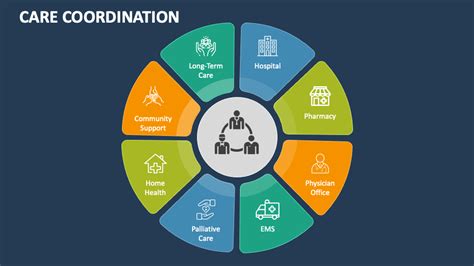Intro
Discover the transformative power of primary care in achieving total health. Learn how regular check-ups, preventive measures, and personalized attention can boost your physical, mental, and emotional well-being. Explore 5 evidence-based ways to optimize your primary care experience, from chronic disease management to holistic wellness strategies, and take the first step towards a healthier, happier you.
In today's fast-paced world, it's easy to neglect our health and wellbeing. With increasingly demanding lifestyles, many of us put off visiting the doctor until we're already feeling unwell. However, this approach can lead to more serious health problems down the line. Primary care is a proactive approach to healthcare that focuses on preventing illnesses and promoting overall wellbeing. By incorporating primary care into our lives, we can achieve total health and improve our quality of life.
Primary care is not just about visiting the doctor when we're sick; it's about building a long-term relationship with a healthcare provider who can offer personalized guidance, support, and care. A primary care physician can help us navigate the complex healthcare system, provide preventive care, and treat acute and chronic illnesses. By taking a proactive approach to our health, we can reduce the risk of developing serious health problems and improve our overall wellbeing.
Achieving total health through primary care requires a holistic approach that addresses our physical, emotional, and mental health. Here are five ways to achieve total health through primary care:
1. Preventive Care

Preventive care is a crucial aspect of primary care that helps prevent illnesses and detect health problems early on. Regular check-ups, screenings, and vaccinations can help identify potential health issues before they become serious. A primary care physician can provide guidance on healthy habits, such as a balanced diet, regular exercise, and stress management, to reduce the risk of chronic diseases like heart disease, diabetes, and obesity.
Some examples of preventive care services include:
- Annual physical exams
- Vaccinations and immunizations
- Cancer screenings (e.g., mammograms, colonoscopies)
- Blood pressure and cholesterol checks
- Health education and counseling
Benefits of Preventive Care
- Reduces the risk of chronic diseases
- Detects health problems early on
- Improves overall health and wellbeing
- Saves money on medical costs in the long run
2. Chronic Disease Management

Chronic diseases, such as diabetes, hypertension, and asthma, require ongoing management to prevent complications and improve quality of life. A primary care physician can help patients manage their chronic conditions by providing personalized guidance, support, and care.
Some examples of chronic disease management services include:
- Medication management
- Lifestyle modifications (e.g., diet, exercise, stress management)
- Regular monitoring and testing
- Education and support
Benefits of Chronic Disease Management
- Improves symptoms and quality of life
- Reduces the risk of complications and hospitalizations
- Increases patient engagement and empowerment
- Saves money on medical costs in the long run
3. Mental Health Services

Mental health is a critical aspect of overall health and wellbeing. Primary care physicians can provide mental health services, such as counseling, therapy, and medication management, to help patients manage mental health conditions like anxiety, depression, and substance abuse.
Some examples of mental health services include:
- Counseling and therapy
- Medication management
- Screening and diagnosis
- Referral to specialty care
Benefits of Mental Health Services
- Improves symptoms and quality of life
- Increases patient engagement and empowerment
- Reduces the risk of complications and hospitalizations
- Saves money on medical costs in the long run
4. Health Education and Counseling

Health education and counseling are essential components of primary care that help patients make informed decisions about their health. A primary care physician can provide personalized guidance and support on healthy habits, disease prevention, and management of chronic conditions.
Some examples of health education and counseling services include:
- Nutrition and diet counseling
- Exercise and physical activity counseling
- Stress management and relaxation techniques
- Health literacy and patient education
Benefits of Health Education and Counseling
- Improves health knowledge and literacy
- Increases patient engagement and empowerment
- Reduces the risk of chronic diseases
- Saves money on medical costs in the long run
5. Care Coordination and Navigation

Care coordination and navigation are critical components of primary care that help patients navigate the complex healthcare system. A primary care physician can coordinate care with specialists, hospitals, and other healthcare providers to ensure seamless and comprehensive care.
Some examples of care coordination and navigation services include:
- Referral to specialty care
- Hospital and post-acute care coordination
- Care planning and management
- Patient advocacy and support
Benefits of Care Coordination and Navigation
- Improves patient satisfaction and experience
- Reduces the risk of medical errors and complications
- Increases patient engagement and empowerment
- Saves money on medical costs in the long run
In conclusion, achieving total health through primary care requires a holistic approach that addresses our physical, emotional, and mental health. By incorporating preventive care, chronic disease management, mental health services, health education and counseling, and care coordination and navigation into our lives, we can improve our overall wellbeing and quality of life. Take control of your health today and schedule an appointment with a primary care physician.
What is primary care?
+Primary care is a proactive approach to healthcare that focuses on preventing illnesses and promoting overall wellbeing. It involves building a long-term relationship with a healthcare provider who can offer personalized guidance, support, and care.
What are the benefits of preventive care?
+Preventive care can help reduce the risk of chronic diseases, detect health problems early on, and improve overall health and wellbeing. It can also save money on medical costs in the long run.
How can I find a primary care physician?
+You can find a primary care physician by asking for referrals from friends or family members, checking with your health insurance provider, or searching online. It's essential to research and choose a physician who is a good fit for your needs and preferences.
